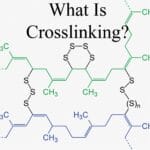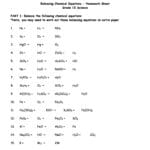The Weight of the Matter: Lead’s Density and Persistence
Lead (Pb), a dense metal weighing 11.34 grams per cubic centimeter, poses a persistent environmental threat. Its high density influences its behavior in the environment, hindering natural breakdown and removal. Past uses in gasoline, paint, plumbing, and industrial processes have left a legacy of lead contamination in soil, water, and air. This density, coupled with lead’s chemical properties, makes it a long-term environmental hazard requiring ongoing management.
Lead’s Toxic Legacy: Health Consequences Across the Lifespan
Lead’s toxicity is well-documented, impacting virtually every organ system in the human body. Its neurotoxic effects are particularly concerning, especially for children. Because their developing nervous systems are more susceptible, childhood lead exposure can cause irreversible cognitive impairment, developmental delays, and behavioral problems. Adults are not immune, as lead exposure can lead to cardiovascular issues, kidney damage, and reproductive problems. Bioaccumulation, the gradual buildup of lead in the body, exacerbates these risks over time, even with low-level exposure.
Combating Contamination: Remediation and Preventive Strategies
Addressing lead contamination necessitates a multi-pronged strategy. Remediation efforts aim to remove or stabilize lead in contaminated environments. These techniques include:
- Phytoremediation: Utilizing specific plant species to absorb lead from the soil.
- Soil Washing: Treating contaminated soil with chemical solutions to extract lead.
- Stabilization/Solidification: Binding lead within the soil matrix to reduce its mobility.
Prevention, however, remains paramount. Transitioning to lead-free alternatives in manufacturing, construction, and other industries is crucial. This shift requires robust regulations, industry innovation, and public awareness campaigns.
The Regulatory Landscape: Current Status and Future Needs
Current lead regulations vary significantly across the globe, creating challenges for effective international management. Harmonizing these standards is essential to ensure consistent protection. Future regulations should prioritize:
- Incentivizing Innovation: Promoting research and development of lead-free materials and technologies.
- Sustainable Recycling: Developing efficient and safe methods for lead recycling to minimize environmental impact and resource depletion.
- Enhanced Monitoring: Implementing rigorous monitoring programs to track contamination levels, assess remediation effectiveness, and identify emerging threats.
A Roadmap to a Lead-Safe Future: Actionable Strategies
Individuals, industries, and governments all play a crucial role in mitigating lead’s impact. Here are some actionable steps:
For Individuals:
- Test Your Home: If you live in an older home, have your paint and plumbing tested for lead.
- Safe Renovation Practices: Use lead-safe practices during renovations to minimize dust exposure.
- Healthy Diet: A balanced diet rich in calcium and iron can help reduce lead absorption.
For Industries:
- Embrace Lead-Free Alternatives: Invest in research and development of lead-free products.
- Responsible Waste Management: Implement strict procedures for handling and disposing of lead-containing waste.
- Transparency and Disclosure: Provide clear information to consumers about lead content in products.
For Governments:
- Strengthening Regulations: Enforce stricter standards for lead emissions, waste disposal, and product safety.
- Targeted Remediation Programs: Prioritize cleaning up highly contaminated sites, particularly schools and residential areas.
- Public Awareness Campaigns: Educate the public about the dangers of lead exposure and prevention strategies.
- International Collaboration: Work with other nations to develop globally consistent lead regulations.
A Shared Responsibility: Towards a Lead-Free World
Lead contamination is a global challenge requiring collective action. By understanding the risks, embracing preventive measures, and implementing innovative solutions, we can create a healthier and more sustainable future free from the pervasive threat of lead.
- Jesus Bible: Discover Jesus’s Story Throughout Scripture - April 27, 2025
- Don Luis: Unraveling the 16th-Century Virginia Mystery - April 27, 2025
- Captain J’s Kauai Tours: Unforgettable Na Pali Coast Adventures - April 27, 2025
















